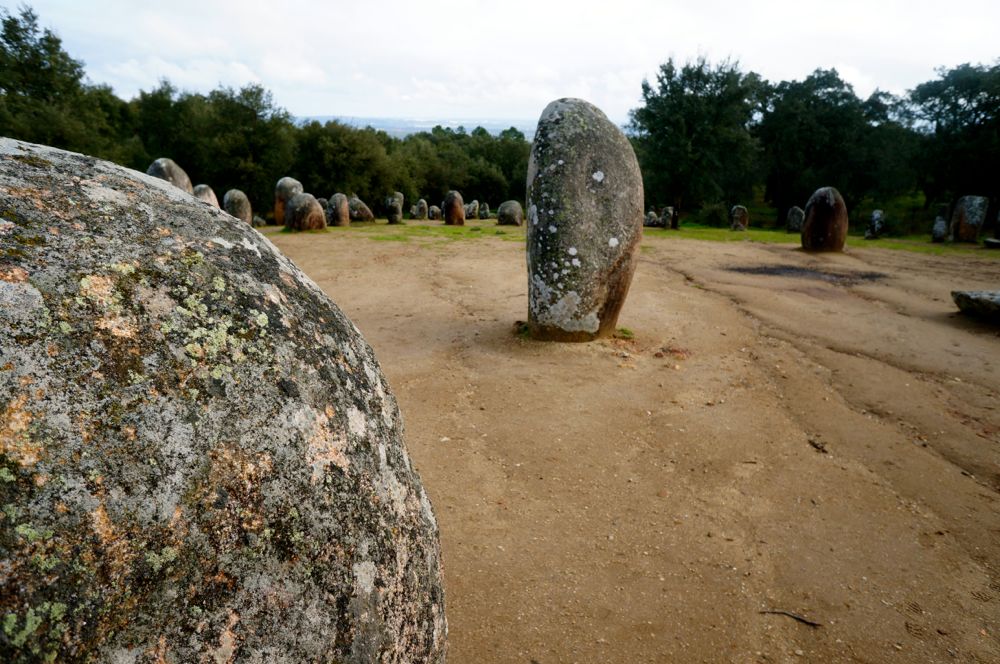|
Situated on a slightly uphill climb in the midst of a cork grove near Guadalupe, a tiny village west of Evora, the Cromlech was the surprise in our exploration of Evora and its environs. Built around 7000 years ago, this Cromlech was discovered only in 1964. Mystery envelops you when visiting this Hill of the Stone Amphorae as it has often been referred to. Even older than Stonehenge, this Cromlech in Almendres is one of the largest grouping of structured menhirs in Europe. It contains around 92 menhirs (elliptical stones), some of them engraved. What is a Menhir? Wikipedia gives us the best definition: A menhir (French, from Middle Breton: maen, "stone" and hir, "long"), standing stone, orthostat, lith or masseba/matseva is a large upright standing stone. Menhirs may be found singly as monoliths, or as part of a group of similar stones. Their size can vary considerably, but their shape is generally uneven and squared, often tapering towards the top. More about Menhir, here's the Wikipedia link. It is believed by some that the Cromlech served as an astronomical observatory in the ancient times. 92 points to the number of the days in a quarter year according to this post. Others believe it has religious purposes which invite some religious groups to hold rituals there. Still others believe that these menhirs represent tutelary entities or to others, ancient lineages of power. So, if you are planning a visit to Portugal, go to Evora and from here, you can visit the Cromlech. There certainly is more to these stones. Let it reveal its mystery to you.
Comments are closed.
|
Archives
January 2024
|




